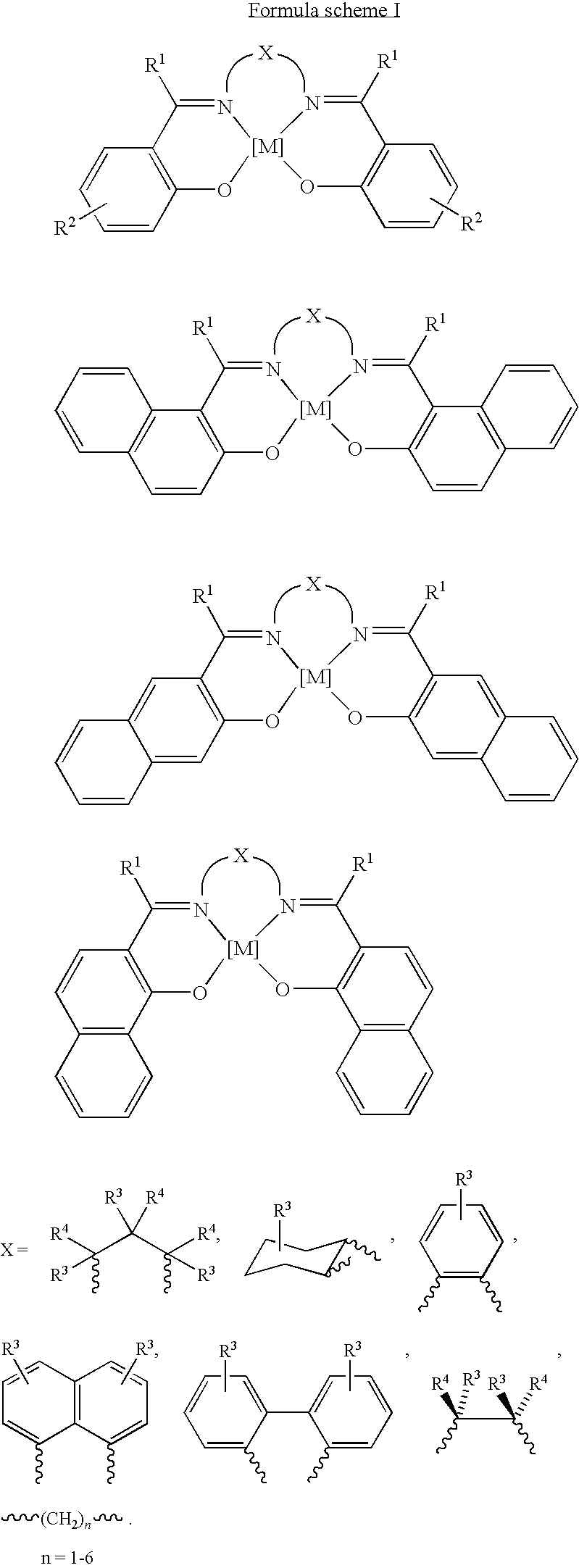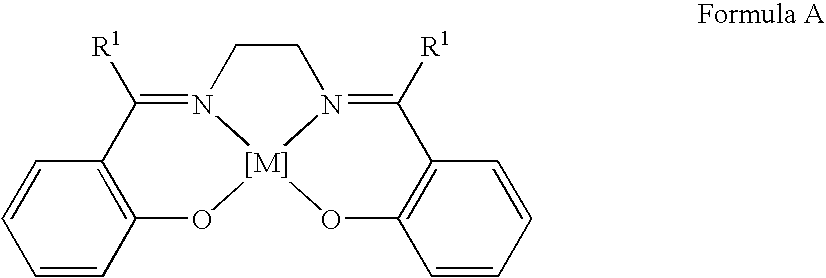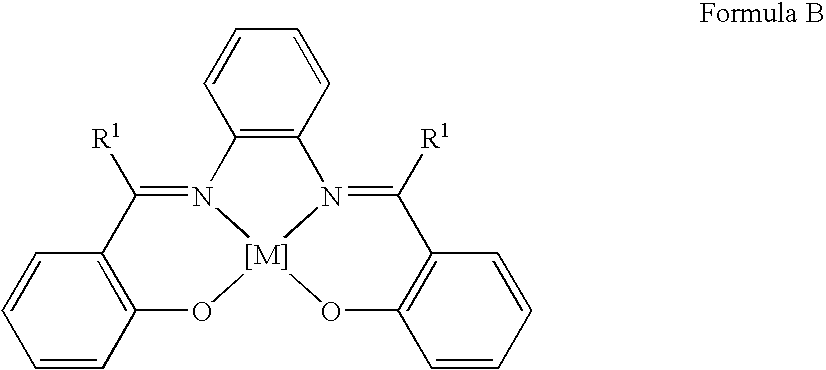Process for the preparation of urethanes
- Summary
- Abstract
- Description
- Claims
- Application Information
AI Technical Summary
Benefits of technology
Problems solved by technology
Method used
Image
Examples
example 1
Reported as Entry 11 in Table 1
[0090]The oxidative carbonylation reaction was carried out in a 100 cm3 stainless steel autoclave having a polytetrafluoroethylene beaker as an insert. 0.0845 g (0.22 mmol) of N,N′-bis(salicylidene)-1,2-phenylene diaminocobalt(II), 1.023 g (11.0 mmol) of aniline and 10.692 g (297.2 mmol) of methanol were mixed in the autoclave. The autoclave was filled at room temperature (about 25° C.) with a mixture of 4 bar oxygen gas and 36 bar carbon monoxide gas. When the gas supply to the autoclave had been stopped, the autoclave was inserted into an aluminum heating block, which was heated to 200° C. In the course of 5 minutes, the autoclave reached a reaction temperature of 165° C., which was then kept constant. After a reaction time of 3 hours, the autoclave was cooled with cold water and ice until, after about 5 minutes, it reached room temperature. The reaction mixture was then analyzed qualitatively and quantitatively by gas chromatography, using naphthale...
example 2
Reported as Entry 10 in Table 1
[0091]The reaction described in Example 1 was repeated in a stainless steel autoclave having a polytetrafluoroethylene beaker of 100 cm3 capacity. 0.0714 g (0.22 mmol) of N,N′-bis(salicylidene)-ethylene diaminocobalt(II), 1.023 g (11.0 mmol) of aniline, 10.692 g (297.2 mmol) of methanol were mixed in the autoclave. The autoclave was filled at room temperature with a mixture of 4 bar oxygen gas and 36 bar carbon monoxide gas. When the gas supply to the autoclave had been stopped, the autoclave was inserted into an aluminum heating block, which was heated to 200° C. In the course of 5 minutes, the autoclave reached a reaction temperature of 165° C., which was then kept constant. After a reaction time of 3 hours, the autoclave was cooled with cold water and ice until, after about 5 minutes, it reached room temperature. The reaction mixture was then analyzed qualitatively and quantitatively by gas chromatography, using naphthalene as the internal standard....
example 3
Reported as Entry 9 in Table 1
[0095]The reaction described in Example 1 was again carried out in a stainless steel autoclave having a polytetrafluoroethylene beaker of 100 cm3 capacity. 0.0828 g (0.22 mmol) of bis-aminomethyl-bis(8-hydroxyquinoline) cobalt(II), 1.023 g (11.0 mmol) of aniline, and 10.692 g (297.2 mmol) of methanol were mixed in the autoclave. The autoclave was filled at room temperature with a mixture of 4 bar oxygen gas and 36 bar carbon monoxide gas. When the gas supply to the autoclave had been stopped, the autoclave was inserted into an aluminum heating block, which was heated to 200° C. In the course of 5 minutes, the autoclave reached a reaction temperature of 165° C., which was then kept constant. After a reaction time of 3 hours, the autoclave was cooled with cold water and ice until, after about 5 minutes, it reached room temperature. The reaction mixture was then analyzed qualitatively and quantitatively by gas chromatography, using naphthalene as the inter...
PUM
| Property | Measurement | Unit |
|---|---|---|
| Temperature | aaaaa | aaaaa |
| Pressure | aaaaa | aaaaa |
| Pressure | aaaaa | aaaaa |
Abstract
Description
Claims
Application Information
 Login to View More
Login to View More - R&D
- Intellectual Property
- Life Sciences
- Materials
- Tech Scout
- Unparalleled Data Quality
- Higher Quality Content
- 60% Fewer Hallucinations
Browse by: Latest US Patents, China's latest patents, Technical Efficacy Thesaurus, Application Domain, Technology Topic, Popular Technical Reports.
© 2025 PatSnap. All rights reserved.Legal|Privacy policy|Modern Slavery Act Transparency Statement|Sitemap|About US| Contact US: help@patsnap.com



